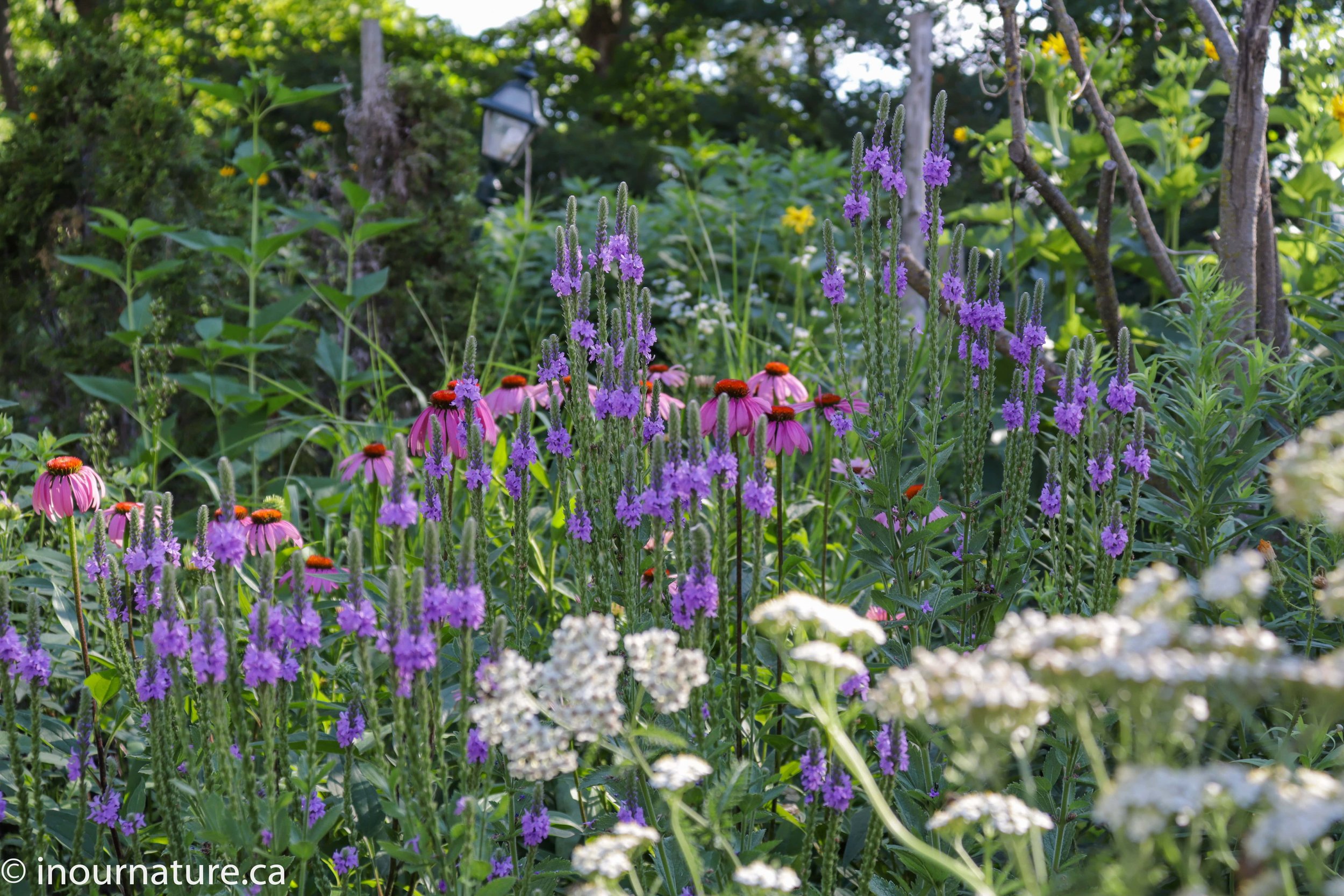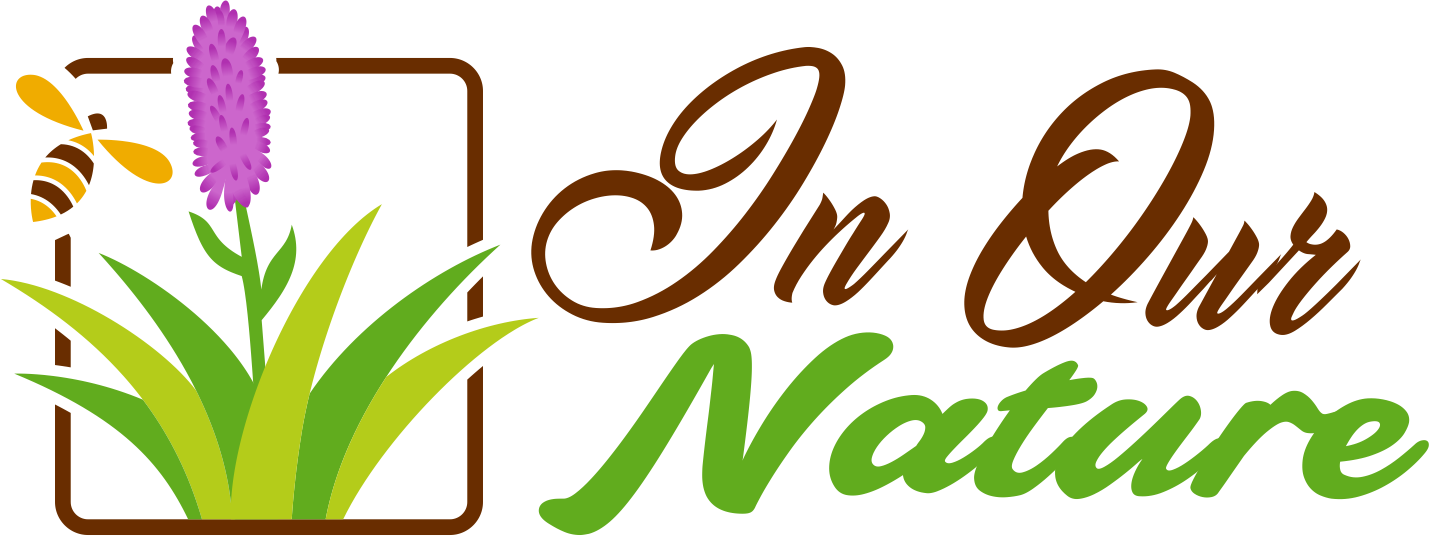
Gardening With Plant Communities
| Let nature guide your plant choices |
What does it mean to garden with plant communities?
The biggest mistake I see native plant gardeners make is choosing the wrong plants for their garden. Often, this happens because gardeners select plants as standalone individuals instead of as part of the natural plant communities they come from.
In nature, plants don’t grow as individuals but as tight-knit communities of compatible plants called plant communities. Within their communities, plants are collectively adapted to thrive among each other and within the environmental conditions that the community is found in. Natural garden designers can use the success of these natural plant communities to guide their plant choices in the garden.
Natural garden design seeks to make our gardens part of nature again. In order to do this, we need to start re-uniting plant communities in our gardens. This means identifying the ecosystem or plant community (referred to here as your garden type) our garden most closely resembles and basing our plant choices on species that naturally thrive together those communities.
This ecosystem-based approach empowers natural garden designers to choose plants that are better adapted to their site and to each other, resulting in a more successful garden.
How to garden with plant communities
1.Understand site conditions
Step 1: Know Your Soil
Texture Test: Pinch moist soil between your fingers. Sandy soil feels gritty, clay feels slippery, and loam is in between.
Squeeze Test: Form a ball with moist soil. Sandy soil crumbles, clay holds tightly, and loam keeps shape but crumbles easily.
Mason Jar Test: Mix soil and water in a jar. Sand settles first, followed by silt, clay and organic material. Measure layers to calculate soil composition.
Step 2: Evaluate Sunlight Levels
Full Sun: 6+ hours of direct sunlight per day.
Part Sun: 4–6 hours of direct sunlight per day, including midday or afternoon sun.
Part Shade: 3–4 hours of direct sunlight, usually in the morning or late afternoon.
Dappled Shade: Filtered sunlight through tree canopies or other obstructions, with less than 2 hours of direct sun.
Step 3: Assess Soil Moisture
Standing Water: Shallow standing water all-year-long such as that found in a pond.
Wet: Consistently saturated, often in low areas. Temporary standing water.
Seasonally Wet: Alternates between wet and dry conditions. May be wet in the spring then bone-dry the rest of the year.
Moist: Damp but not waterlogged.
Mesic: Balanced moisture, drains well without drying out.
Dry: Quick-draining, common in sandy or sloped areas.
Prairie Garden: Sand, loam, clay or gravel. Full sun. Dry to mesic soils. If your lawn gets baked by the sun and turns brown during the heat of summer than you likely have a prairie garden type. Ideal for dry, clay soils.
Meadow Garden: Sand, loam, clay, but more organically rich than the prairie. Full sun - part sun. Mesic to moist soils. Meadows gardens are ideal for sites with richer, moister soils and a little more shade than the prairie garden type.
Savanna Garden: Usually sandy. Clay or loam if dry. Full sun to part sun. Dry to mesic. Lightly treed yard with dry soil. Like a prairie but with slightly more shade.
Forest Edge/Open Woods Garden: Sand, loam, clay, organically rich soil. Part sun to part shade. Dry, mesic, moist. Gardens with an even mix of sun and shade. These spaces serve as a transition zone between forests and meadows/prairies. Thicket and glade ecosystems fall under this garden type.
Forest Garden: Sand, loam, clay, organically rich. Part shade to shade. Evenly moist soils. Gardens with more shade than sun, dappled sunlight under mature deciduous trees with organically rich soil and a leaf litter layer. Dry shade falls under this garden type.
Wetland/pond Garden: Sand, loam, clay, mucky, peaty. Full sun to part sun. Consistently wet soil to standing water. Ideal for ponds, pond edges, streambanks or bog gardens.
Wet Meadow Garden: Sand, loam, clay. Full sun to part sun. Moist to Seasonally wet soils. Soil is saturated during winter, spring or after rainfall but dry the rest of the time. Rain gardens, floodplains, detention ponds
Alvar/Rock Garden: Rocky, gravelly, nutrient poor, shallow. Full sun. Seasonally-wet to very dry. Rock gardens, green roof, south side of house under eves trough. This garden type is ideal for plants that grow along sandy shorelines, rocky outcrops and alvars.
2.Choose your garden type:
Now you will use the results from your site analysis to select the garden type that best suits it.
In nature, plant communities are much more diverse than what is shown here, with many regional variations (e.g., prairies may be tall-grass or short-grass, alvars may have trees or may not). To simplify things, I’ve grouped them into broader categories based on common growing conditions faced by the average gardener.
Your garden may share more than one garden type so you may need to blend plants from multiple types. For example, prairies and meadows share many plants while forests and woodland edges share many plants.
3.Finding plants for your garden type:
Once you’ve identified your garden type, you’ll use it to create a broad list of native plants suited to that plant community. This is where the habitat information for native plants becomes invaluable. Many native plant resources, such as books or websites, list the habitats where a plant naturally occurs—such as prairies, woodlands, or wetlands.
As mentioned earlier, plant communities are much more diverse than what can be articulated here. Therefore, you will use your garden type only to create a broad list of plants that are suited to your garden type but you will need to refine that list further by matching plants to your site’s specific conditions—like soil, sunlight, and moisture, height restraints, mannerism and more. However, by starting with a broad list of plants suited to your garden type, you are increasing the chances that you’ll be pairing plants with companions that they are compatible with.
Helpful resources for choosing plants for your garden type:
Benefits of Using Plant Communities in the Garden
Natural plant communities offer valuable lessons for gardeners, helping to match plants to the site, find compatible species, reduce maintenance, and create visually cohesive landscapes.
Choose the Right Plants: Matching your site to a natural plant community simplifies plant selection. Focus on species that thrive together in the wild rather than impulsively collecting plants, which often leads to disjointed results.
Companion Planting: Plants that naturally coexist in the wild make excellent companions in the garden. For example, Little Bluestem and Butterfly Milkweed thrive together in prairies, making them perfect partners.
Reduced Maintenance: Healthy plant communities are self-sustaining, with plants filling gaps, self-seeding, and adapting to disturbances. This reduces the need for mulching, weeding, or constant replanting—saving gardeners time and effort.
Visual Harmony: Planting native species from the same community creates a sense of place and connection to the land. In contrast, exotic or randomized plant palettes can result in a generic garden lacking regional character. A thoughtfully designed prairie or woodland garden feels authentic and deeply rooted in its surroundings.
Conclusion
The key to successful native plant gardening lies in choosing plants that belong to the natural plant communities suited to your site. Instead of selecting plants as isolated individuals, embrace an ecosystem-based approach by analyzing your garden’s soil, sunlight, and moisture conditions to identify the corresponding natural plant community—such as prairies, meadows, or forests. This method ensures plants thrive together as they do in nature, reducing maintenance, fostering biodiversity, and creating visually cohesive, low-maintenance landscapes. By matching plants to their natural companions and site conditions, gardeners can restore ecological balance, support local wildlife, and design gardens deeply connected to their surroundings.







